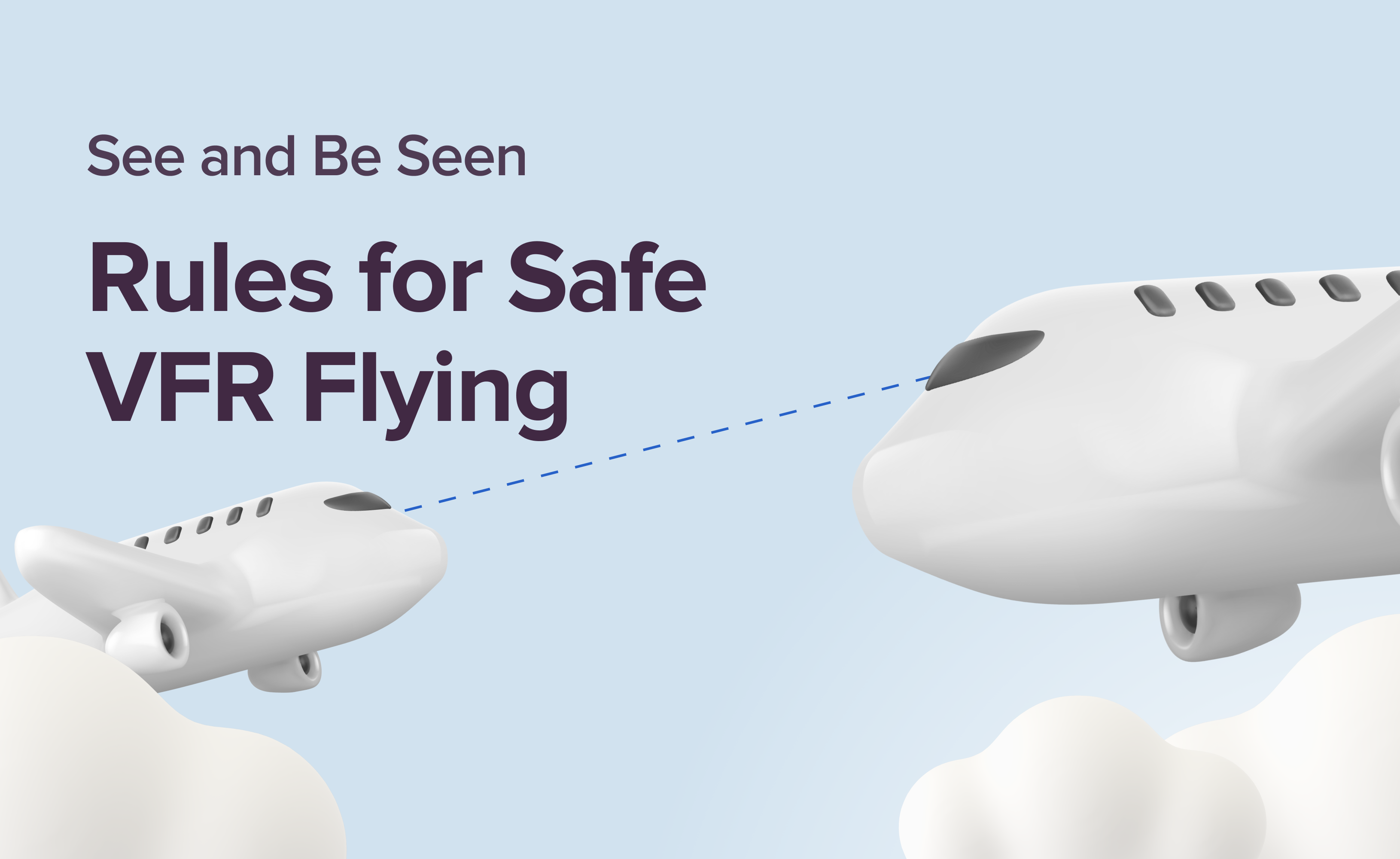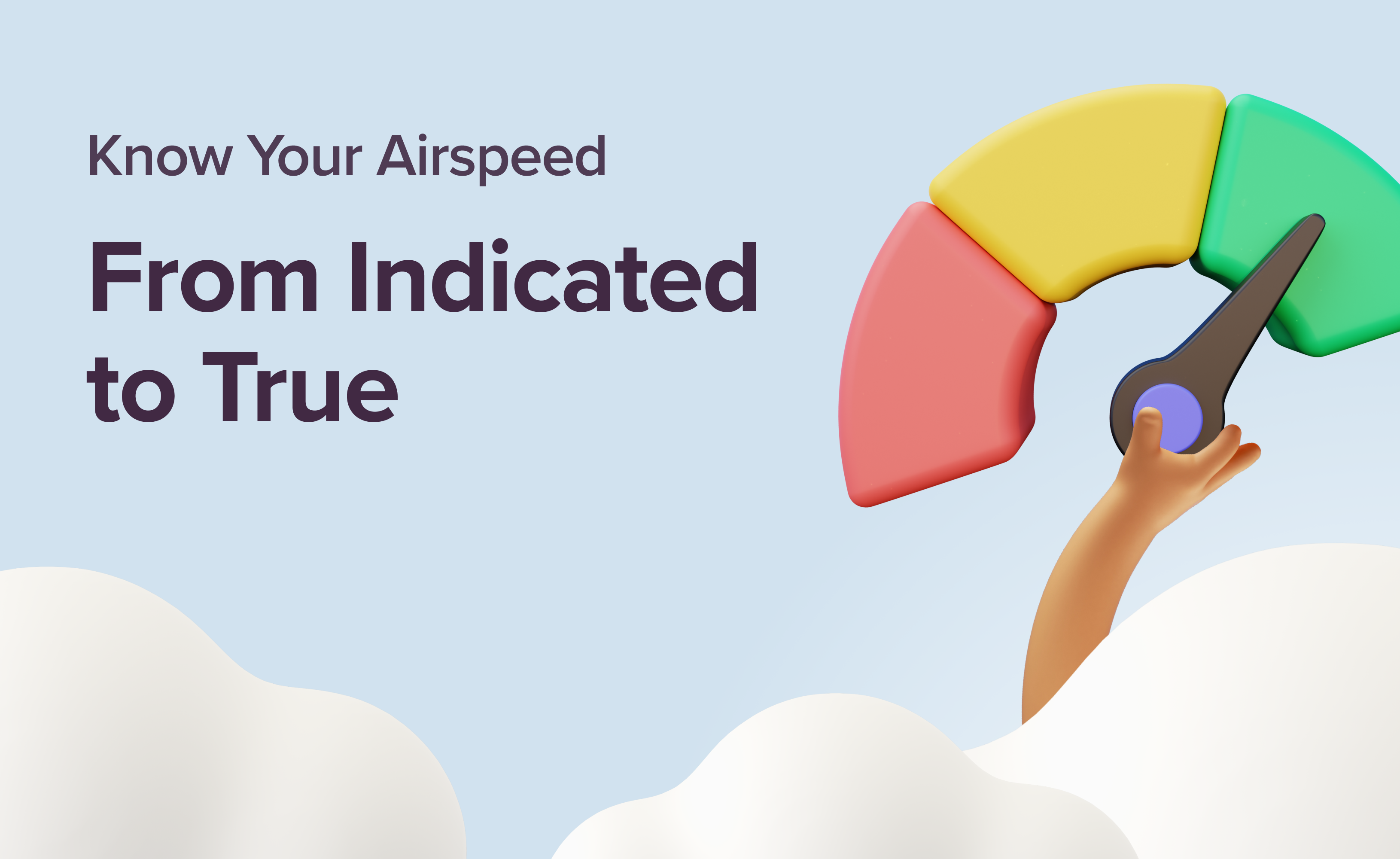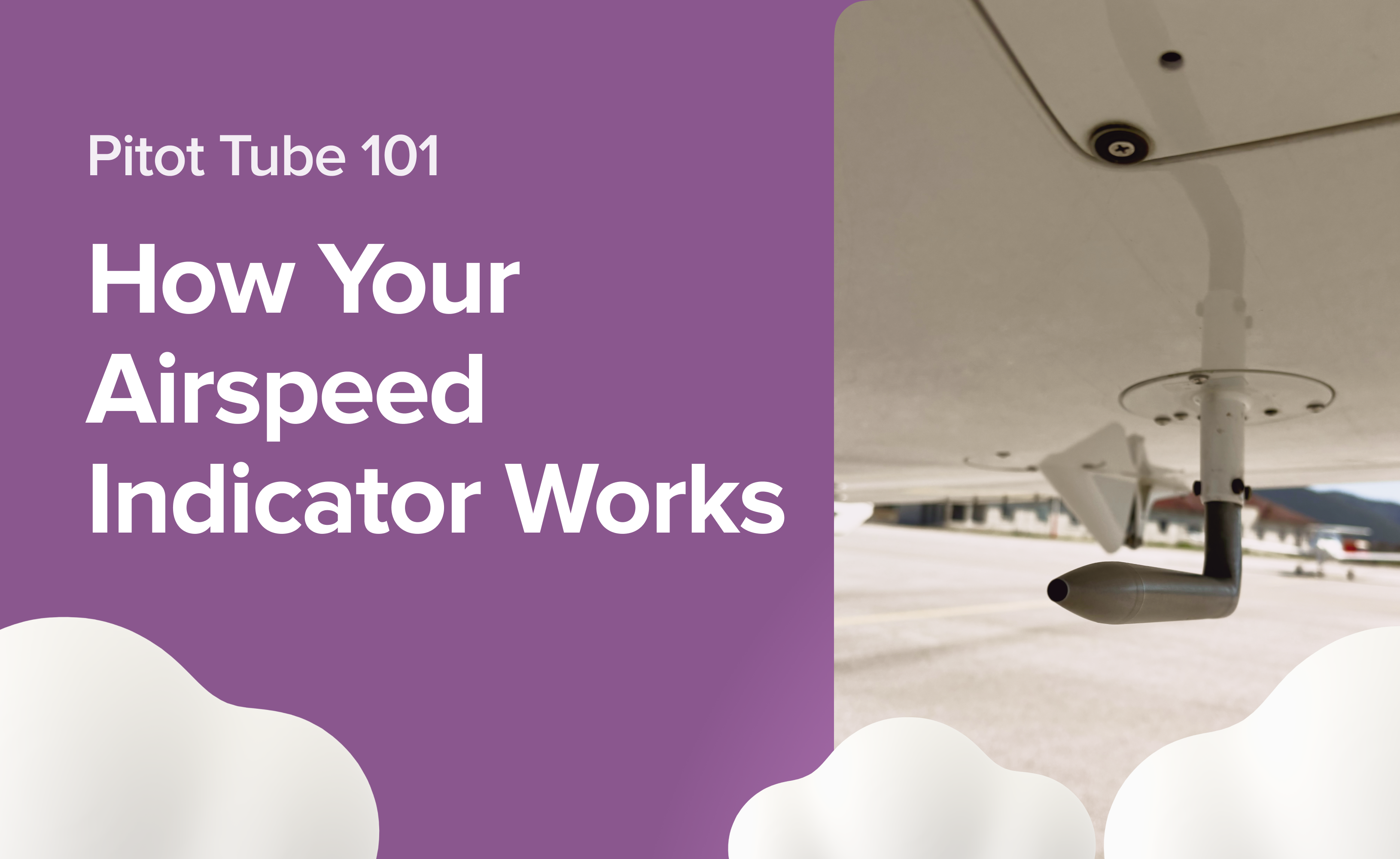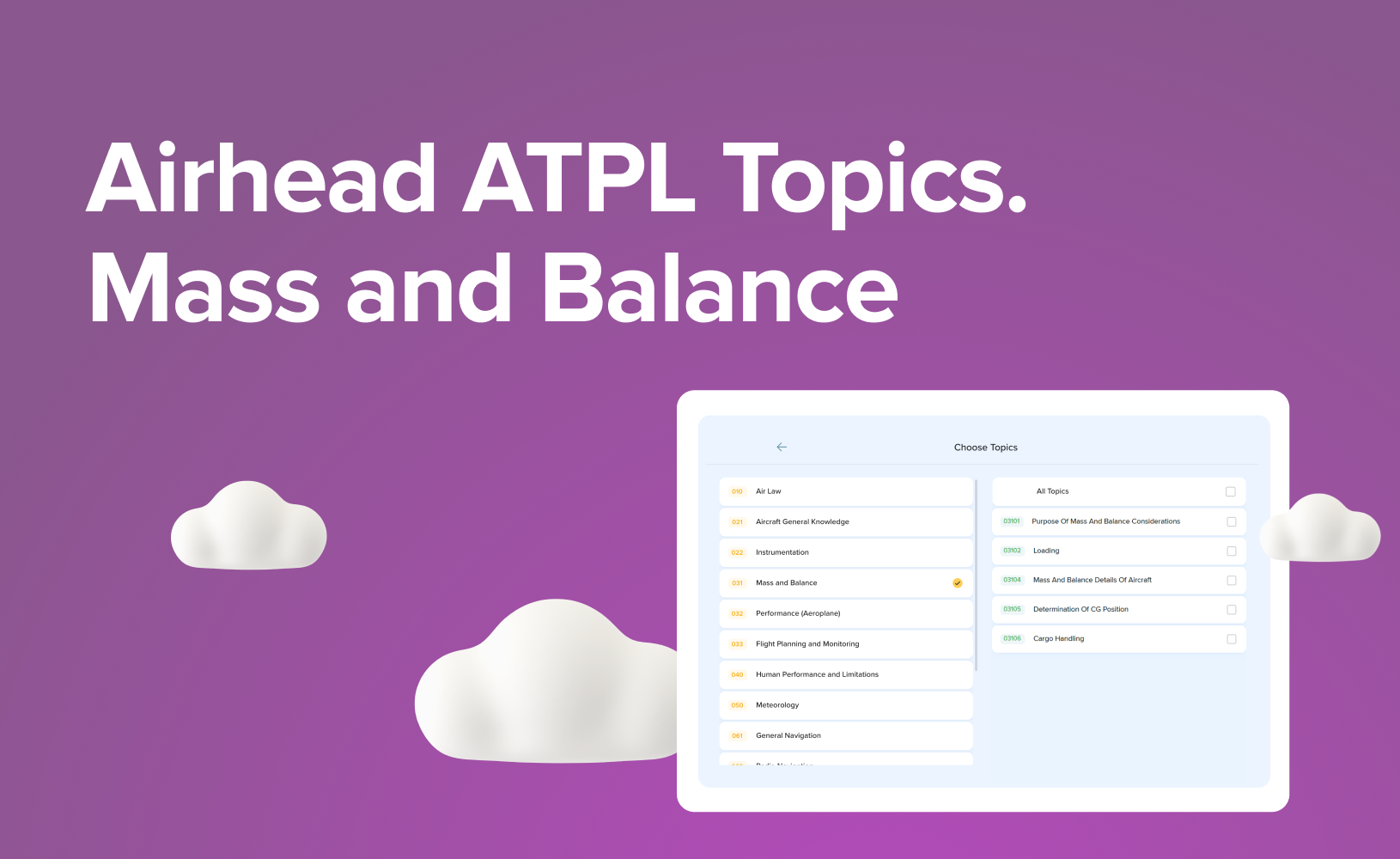Angles That Matter: Pitch, AoA & Flight Path Explained
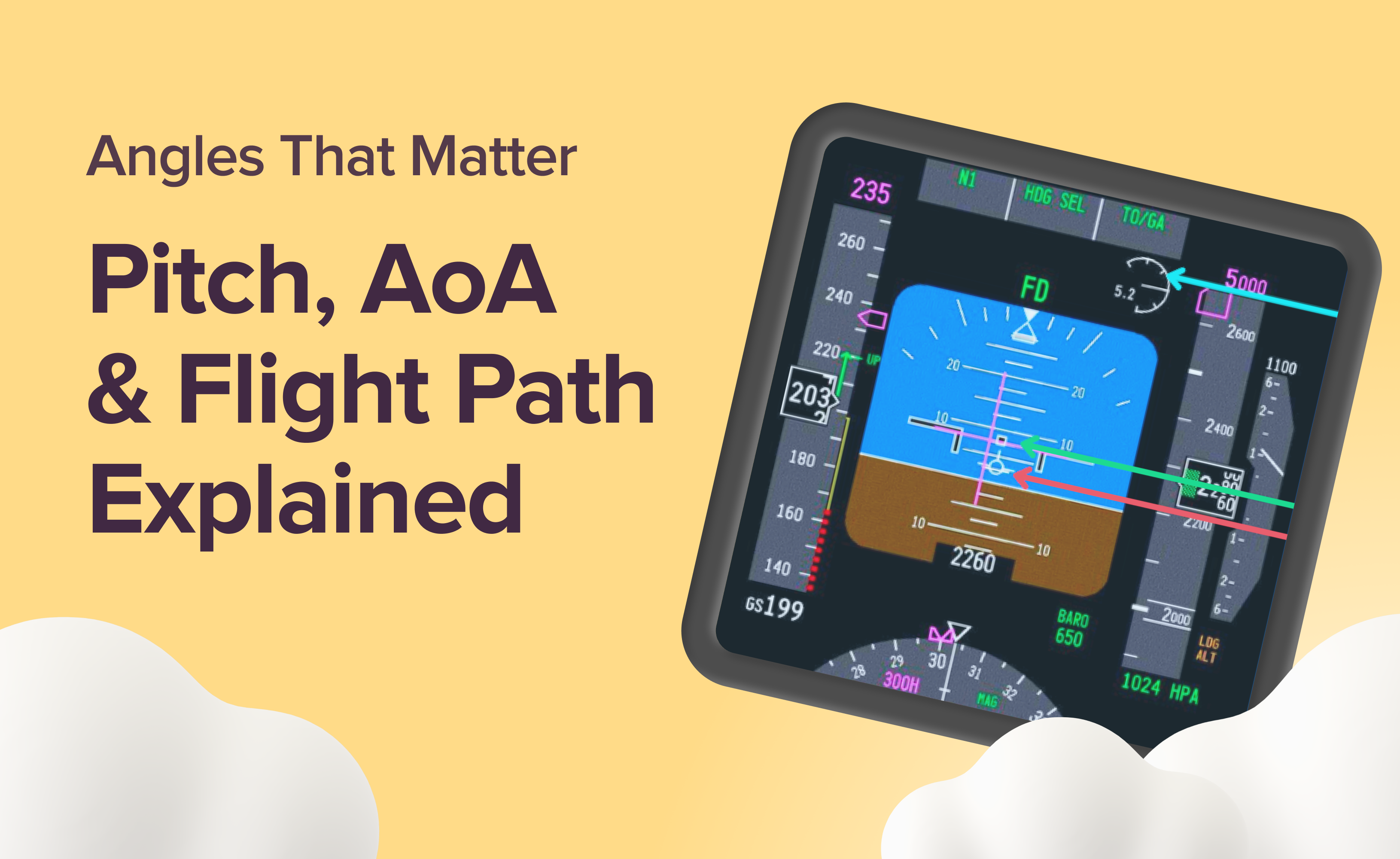
If you’ve ever thought, “The nose is up, so I must be climbing,” you’re not alone — but you’d be wrong. One of the most common misconceptions among student pilots is assuming that pitch angle, angle of attack (AoA), and flight path angle all mean the same thing or always move together. In reality, these three aerodynamic angles each tell a different story about what your aircraft is doing. Confusing them can lead to serious errors — especially in low-visibility or high-workload situations.
In this blog, we’ll break down these critical angles one by one, show how they interact, and help you build the kind of understanding that separates the proficient from the panicked. Whether you're just getting your head around basic aerodynamics or looking to sharpen your situational awareness, this guide will help you fly smarter and safer.
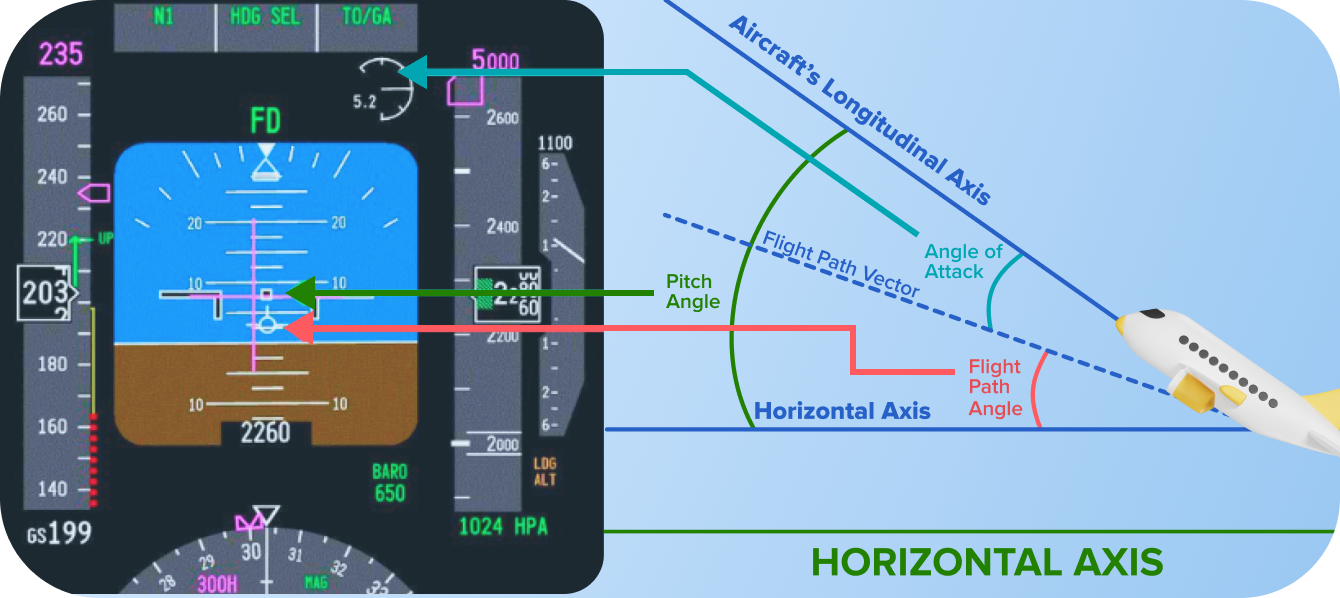
Angle of Attack (AoA)
The Stall Whisperer
The Angle of Attack (AoA) is the angle between the chord line of the wing (the straight line from the leading to trailing edge) and the direction of the oncoming airflow, known as the relative wind. If pitch angle is what your aircraft looks like it’s doing, AoA tells you what the airflow around the wing is actually doing.
In simple terms, it can be roughly estimated as the difference between the aircraft’s pitch angle and its flight path angle. AoA is a critical factor in determining whether a wing is producing efficient lift or approaching a stall. It directly influences both the aircraft's lift generation and its aerodynamic stability.
AoA is the most important angle in stall prevention. Every wing has a critical Angle of Attack. It typically falls between 15 and 20 degrees for many aircraft. Go beyond it, and lift breaks down. A common misunderstanding? Believing that a stall is always about low speed. In truth, you can stall at any speed if you exceed the critical AoA — including during high-speed steep turns or abrupt pull-ups.
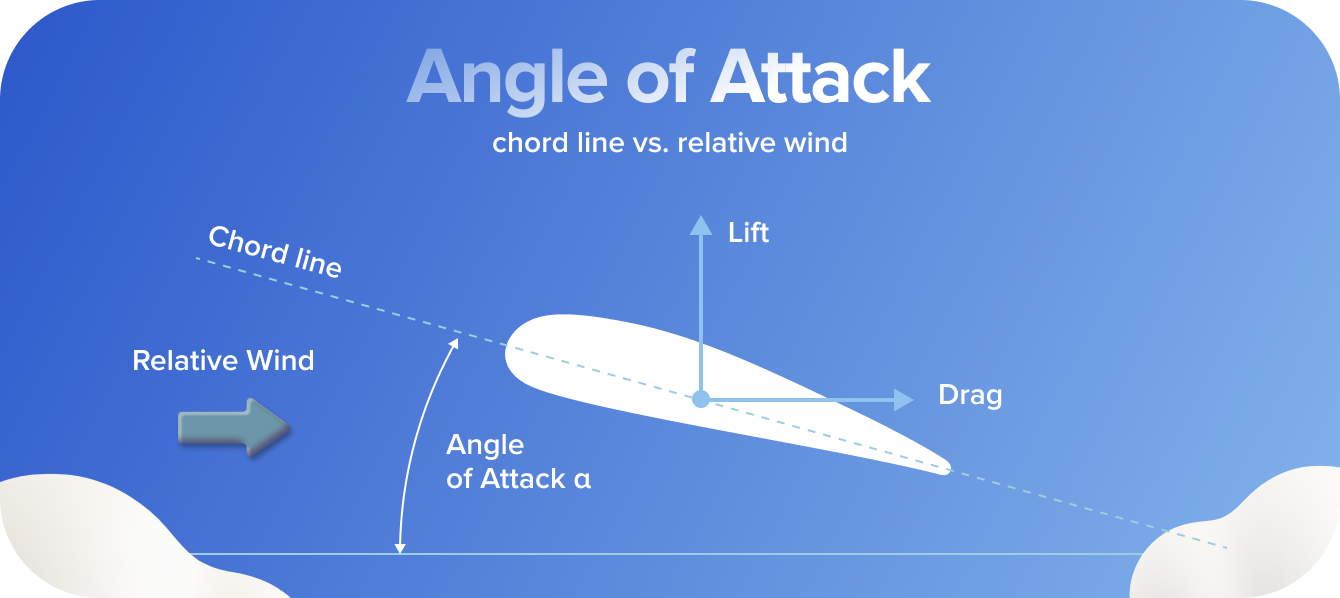
Some modern aircraft include AoA indicators, but many pilots fly without one. That’s why training and situational awareness matter. Watch for cues: decreasing airspeed, increasing pitch, sluggish control response — all can signal a rising AoA.
Understanding AoA is central to UPRT (Upset Prevention and Recovery Training), where pilots learn to identify and recover from pre-stall conditions — not just wait for the buffet or stall horn.
Pitch Angle
What the Nose Tells You
Pitch Angle is the angle between the aircraft’s longitudinal axis (essentially the nose-to-tail line) and the horizon. It’s what you see when you glance at your attitude indicator — the aircraft symbol, showing the aircraft's nose-up, nose-down or level position. Think of it as your aircraft’s body language. Is it “looking” up, down, or straight ahead relative to the earth’s surface?
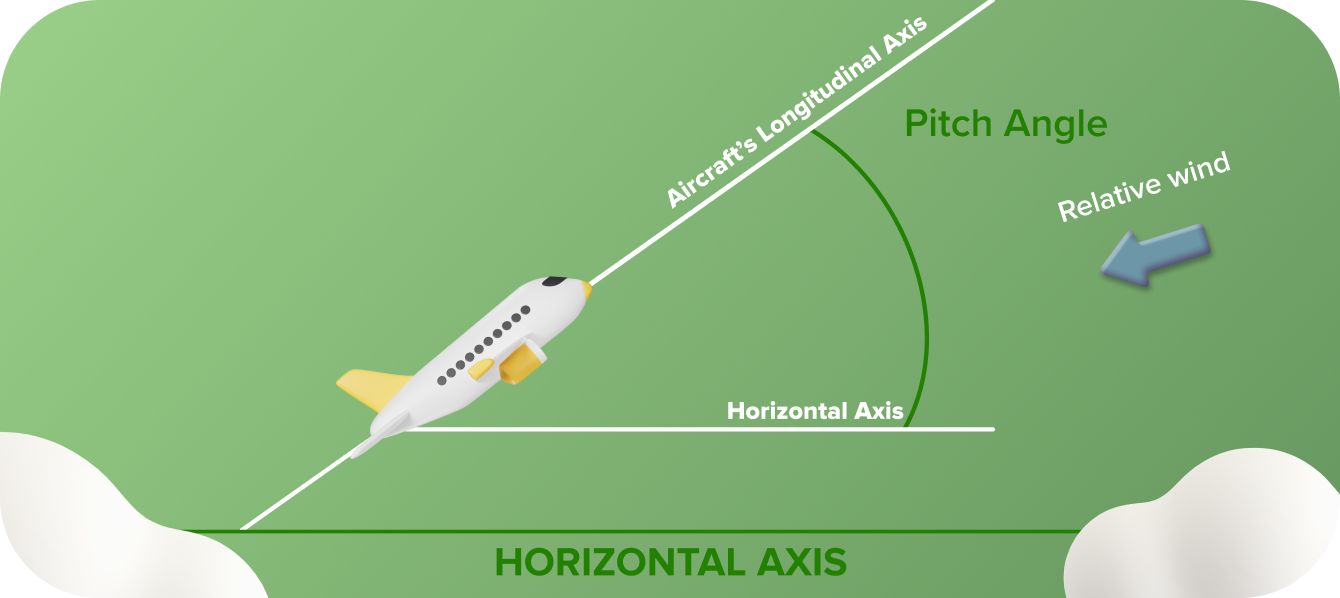
But here’s the catch: just because your nose is pitched up doesn’t mean you’re climbing. The flight path might still be descending due to other forces at play, like a loss of thrust or increasing drag. This is where things can get tricky for new pilots. You might pitch the nose up and expect the aircraft to climb — but if airspeed bleeds off and Angle of Attack (AoA) increases too much, you could be approaching a stall instead.
Airhead's Tip: During slow flight or approach, a high pitch angle with a low climb rate or descent may mean your AoA is increasing — and that’s your cue to check your airspeed and power setting.

Gain a deeper understanding of how aeroplanes turn, pitch, and roll. Learn about the 3 Axes of Rotation in our latest blog.
Flight Path Angle
The True Trajectory
Flight Path Angle (FPA) is the angle between the aircraft’s actual path through the air and the horizon. It describes whether the aircraft is climbing, descending, or flying level — regardless of where the nose is pointing. Think of it as the truth-teller of your motion: it reveals your real direction of travel, not just your attitude.
Flight Path Angle (γ) is defined as the angle between the aircraft's trajectory (i.e. the actual path the aircraft is flying through the air) and the horizontal plane.
When the flight path angle is positive, the aircraft is climbing.
When it is negative, the aircraft is descending.
A zero flight path angle means level flight.
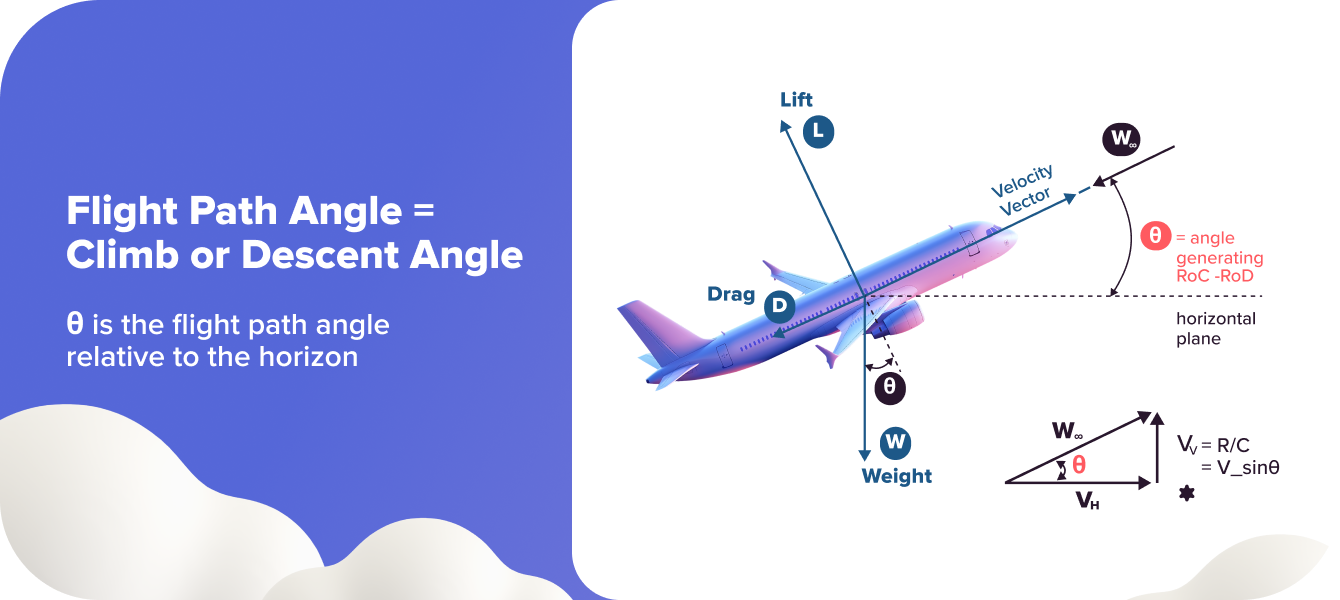
You could have a high pitch angle but still be descending — like in a power-off stall or approach to landing. That’s why understanding FPA is vital: it connects your pitch and AoA to your actual performance.
FPA is especially important in instrument flight, energy management, and advanced manoeuvres like UPRT, where misjudging your trajectory can quickly lead to dangerous situations.
Flight Path Angle can be shown on a flight director or Primary Flight Display (PFD) in glass cockpits — often as a small symbol (flight path vector) that indicates where your aircraft is truly going. In older aircraft, you’ll estimate it based on attitude and performance indicators.
Airhead's Tip: Always cross-check your pitch attitude with vertical speed. If they don’t match, your FPA might be fooling you — especially in high drag or low thrust situations.
Want to know the science behind your airspeed readings? Read our latest blog: Pitot Tube 101: How Your Airspeed Indicator Works.
Comparing Pitch, Angle of Attack, and Flight Path Angle
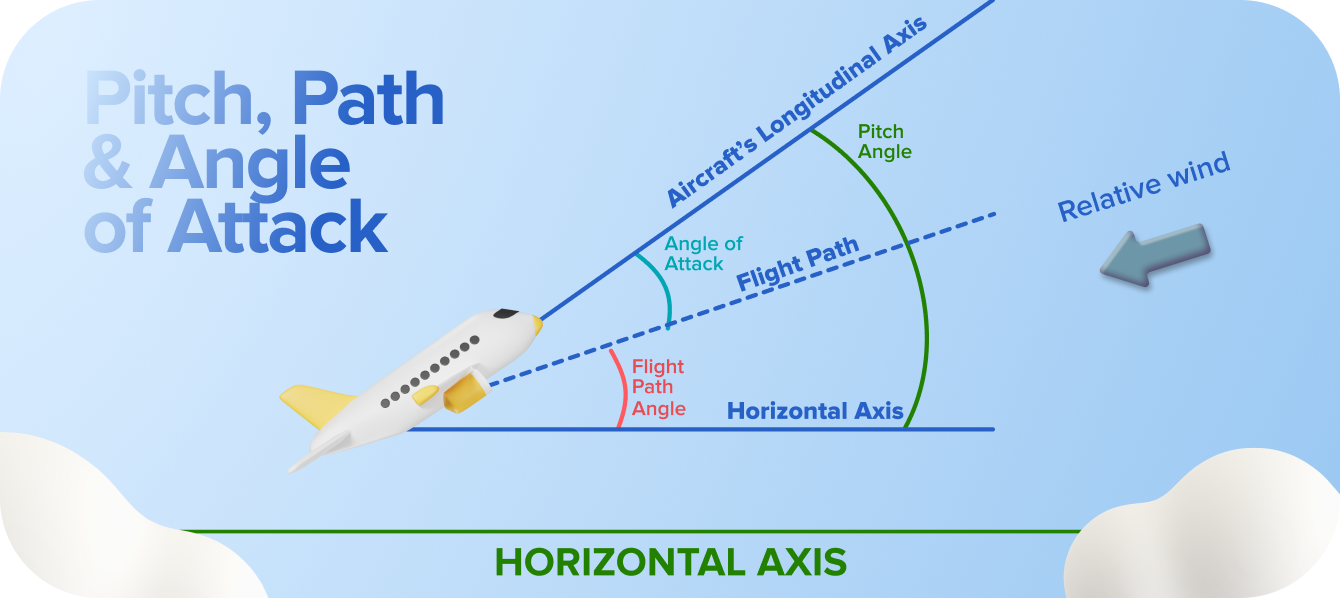
Learning the subtle but critical differences between Pitch, Angle of Attack (AoA), and Flight Path Angle (FPA) is key to mastering aircraft control — especially during non-standard flight attitudes. These three angles commonly get confused because they all describe how the aircraft is oriented or moving through the air. But they serve very different purposes.
Think of it this way:
Pitch tells you where the aircraft looks.
Flight Path Angle tells you where it’s going.
Angle of Attack tells you how the wing is meeting the air—and that’s what determines lift or stall.
This chart breaks down how each angle behaves in various phases of flight, helping you figure out how they work together — and sometimes oppose each other.
Flight Phase | Pitch Angle | Angle of Attack (AoA) | Flight Path Angle | Explanation |
Level Flight | Slightly nose-up | Small (typical cruise AoA) | ~0° (parallel to horizon) | Nose is slightly above horizon to maintain lift; flight path is level. |
Climb | Nose-up | Moderate | Positive (above horizon) | Nose is above horizon and flight path; AoA increases to maintain lift. |
Descent | Nose-down | Small to moderate | Negative (below horizon) | Aircraft descends; AoA still needed to maintain controlled descent. |
Stall | Very nose-up | Excessively high | 0° or Negative | Despite nose-up pitch, aircraft may not be climbing — could be descending. |
Glide (power off) | Slight nose-down | Moderate | Negative | Aircraft descends steadily without power; AoA is still enough to generate lift. |
Turbulence or Wind Shear | Can vary suddenly | Changes rapidly | May not match pitch | AoA can spike even with little pitch change — critical for stall awareness. |
Quick Reference
Pitch ≠ Climb — it shows aircraft attitude, not altitude change.
AoA is the key to lift and stall — always monitor it in relation to stall limits.
Flight Path Angle = actual trajectory — what your altitude is really doing.

Airhead's Takeaway
Pitch, Angle of Attack, and Flight Path Angle each offer a unique window into how your aircraft is performing. The better you understand them, the more confident and precise your flying becomes. So keep flying with curiosity. Tune in to how your aircraft moves, how it feels, and how the angles shift in different phases of flight. It’s this kind of awareness that turns good pilots into great ones. Because great pilots don’t just read their angles—they feel them.







